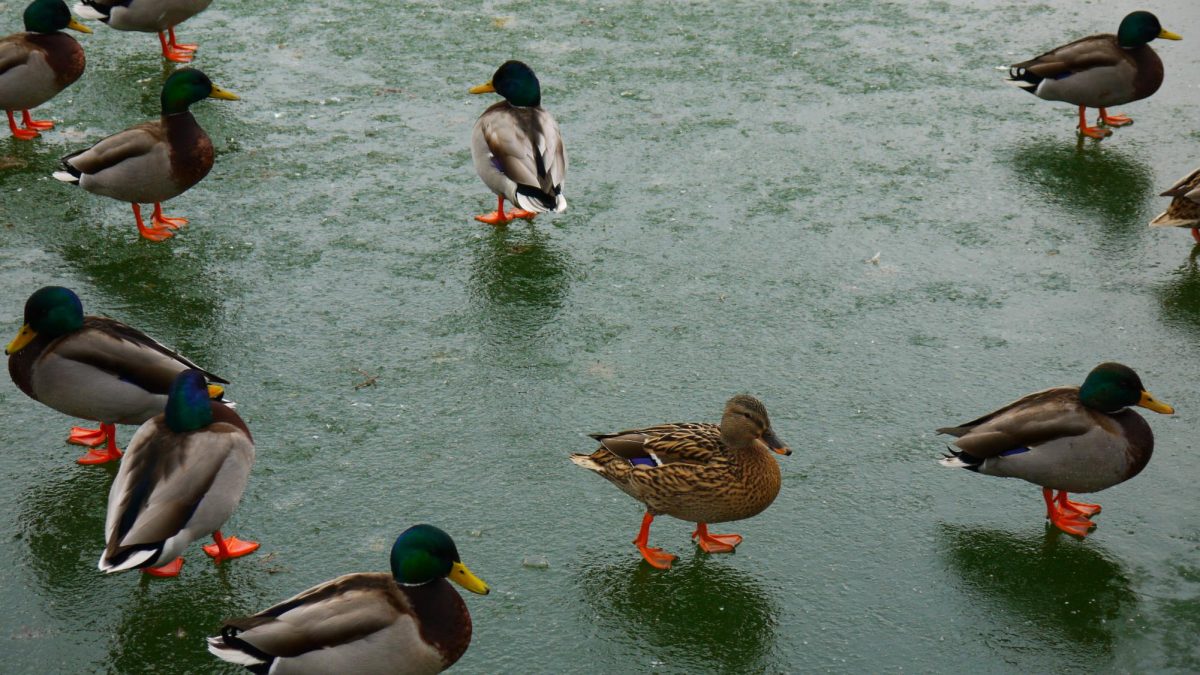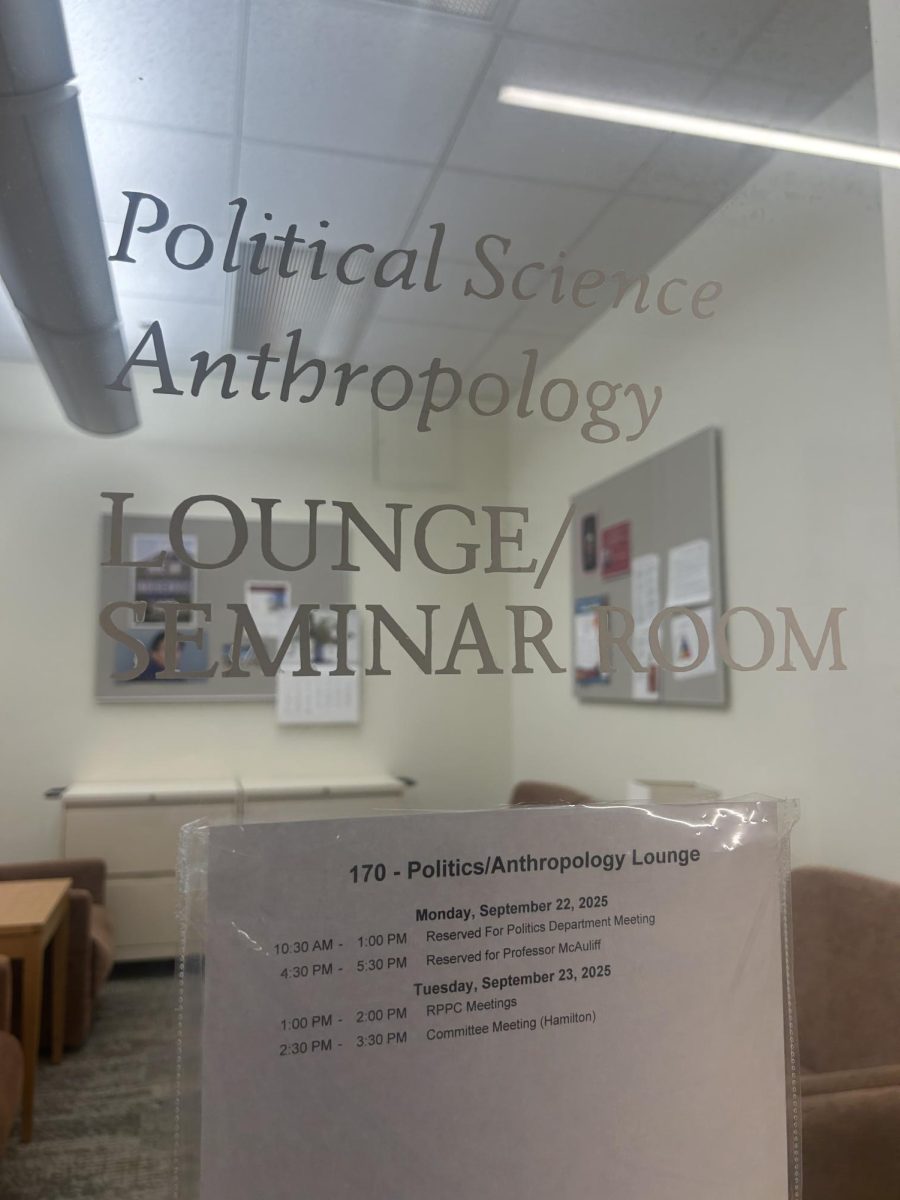On some days, it seems that mallards outnumber people on campus.
Dozens of ducks congregate around Lake Andrews, colloquially known as “the Puddle,” for most of the year. Mallards use the reeds, cattails and low-lying shrubs around the Puddle as cover on the shore, venturing out in large groups to forage for food. They are, simply put, everywhere.
According to Dean of Faculty and Professor of Biology Don Dearborn, “the density of mallards at the puddle is high” and “they pose some challenges for grounds maintenance [and] other organisms.”
Grounds Maintenance Manager Michael Fox said there have been efforts in the past to thin out the duck population by relocating some individuals to other areas. However, these efforts often fail.
“The time that they were successful, I think they fired a net actually over [the pond] and were able to trap some that way,” Fox said of relocation efforts conducted by his predecessor, John Griffiths. In Fox’s two years in the position, he has not overseen any duck relocation.
The Maine Department of Inland Fisheries and Wildlife has also attempted to trap ducks at Lake Andrews to monitor the population for avian flu within the last few years. Fox said they reached out because they figured the ducks on campus would be an easy population to trap and assess.
“They set up right below Page Hall…a big fence to trap and tried to lure them in with feed and whatnot, and didn’t catch a single duck,” Fox said. “They’re not as not as easy to trap as you might guess.”
According to The Sibley Guide to Birds, mallards congregate in shallow ponds and nest along the shoreline. They can be found in the entire continental United States and are year-round inhabitants of Maine. Although mallards do not fly south from Maine in the winter, they do disappear from Lake Andrews. This is because the Puddle tends to freeze over, making it uninhabitable for the birds.
“It’s a relatively predator=free space. Not Bates, specifically, but urban ponds in general,” said Dearborn, who has a background in bird research. He mentioned that the Puddle is also surrounded by green space, lessening the pollutant runoff. Additionally, mallards cannot feed in deeper waters, making the shallow Puddle a good fit.
Despite not migrating in this region of the country, mallards are still protected by the Migratory Bird Treaty Act of 1918. Without federal permission, no one on campus, even administrators like Fox, can transport or harm the ducks in any way. This can pose issues during duckling season.
“We’ve got a couple of planters in front of Pettengill, and a duck made a nest in one of those [last year],” he said. The duck managed to destroy many of the petunias growing in the planter.
Ducklings also have a habit of falling into storm drains while crossing campus from their nests to Lake Andrews in the spring. When this happens, Grounds Services is often called to fish “a duckling or five” out, Fox said.
“We’ve taken to putting hay bales over the storm drains to try and keep them from falling in the first place,” he said.
Bates also protects ducks on campus through its Lake Andrews Stewardship and Use Policy, saying that the humans on campus are prohibited from feeding the ducks – an issue Fox said the college has encountered with locals – or disturbing the birds while they are nesting. These policies are posted around Lake Andrews, according to Director of Residence Life & Community Standards Jimmy Riley.
“As human populations continue to grow rapidly, globally and as our footprint on the environment continues to expand, giving space to natural things…is valuable for the intrinsic reason that…other species and systems have a right to exist,” Dearborn said. “I think any opportunity for people in an urban environment…to observe and be around natural creatures is great.”









